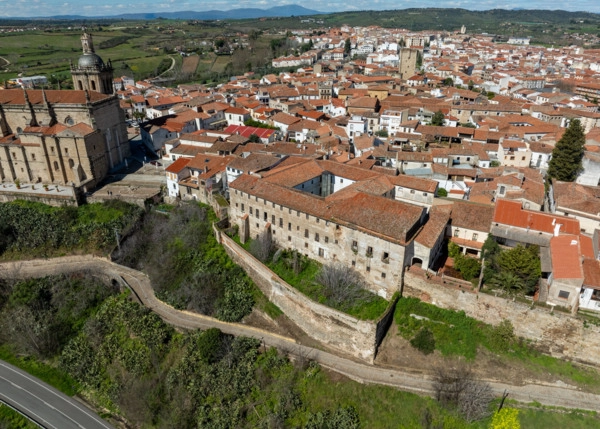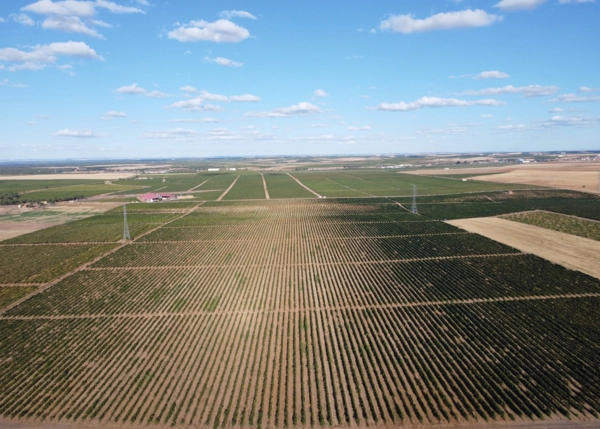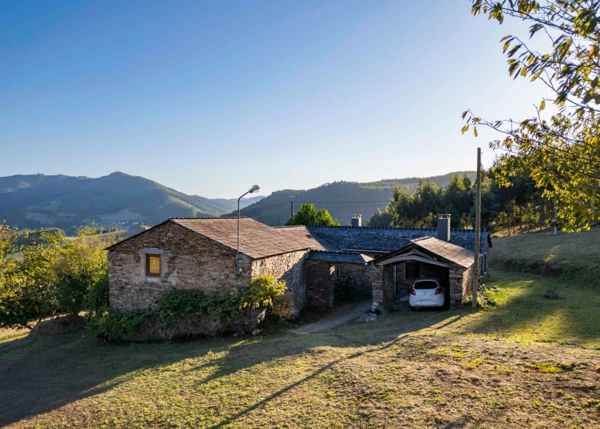
161 results
ID: 2688
280.000 €Unobstructed views, traditional architecture and almost one hectare of land await you in this property in the interior of A Coruña. A stone house that preserves its original essence, with hórreo and multiple auxiliary spaces that form a complete rural ensemble just 3 km from Boimorto and 45 km from Santiago.
Boimorto - A Coruña
ID: 2675
330.000 €In southern Galicia, among fields that fade into the distance, this stone chalet awaits you ready to move in. A family home with spacious interiors and quality finishes, outdoor pool and over 8500 m² of land, on a vast plain at the gates of Xinzo de Limia.
Xinzo de Limia - Ourense

ID: 2256
1.300.000 €A silent witness to almost four centuries of history in the monumental heart of Coria, this former seminary offers 3,430 m² of built space including a Baroque chapel, porticoed cloister and spacious rooms that retain their original character. An exceptional architectural legacy with great potential, in a privileged location next to the cathedral.
Coria - Cáceres
ID: 2581
20.000 €Privacy, nature and simple living define this hidden corner in the heart of Costa da Morte. A small house to renovate located just 350 metres from the beach, offering a unique and affordable opportunity to enjoy a refuge by the sea, on the outskirts of a small village in Camariñas.
Camariñas - A Coruña
ID: 2650
290.000 €A complete and functional rural complex awaits you in this Galician village surrounded by nature, where traditional architecture lives on among trees and green meadows. Stone house ready to move in, hórreo, auxiliary buildings and a large plot of land make up this rural legacy in Outeiro de Rei, just 2 minutes from Penas de Rodas and 20 km from Lugo.
Outeiro de Rei - Lugo
ID: 2732
370.000 €Stone walls, spacious terraces and bright spaces come together in this fully restored property in Amoeiro. A complete rural ensemble with gardens, independent garage and multiple auxiliary spaces, with carefully maintained details ready to enjoy. Your rural home in Galicia just 20 minutes from Ourense capital.
Amoeiro - Ourense

ID: 2649
1.250.000 €Over 42 hectares (103.78 acres) of Verdejo vines await you at this property in Rueda, Valladolid. An extensive producing estate with Denomination of Origin Rueda, irrigation system and a small auxiliary building, in one of Spain's most emblematic wine-growing regions.
Rueda - Valladolid
ID: 2663
540.000 €Take the reins of this fully equipped country house at the foot of Galicia's highest mountain. This tourist accommodation offers several guest rooms, private living area and a lovely garden with gazebo. An active business with excellent reputation that offers the opportunity to inherit a promising project in one of the reference destinations in the province of Ourense.
A Veiga - Ourense
ID: 2588
590.000 €Discover this picturesque rural complex at the gates of Taramundi, steps from the Turia River and surrounded by green mountains. A fully operational rural tourism business with a great reputation, featuring three restored stone houses with 4 independent apartments, and a fourth building ready to renovate.
Taramundi - Asturias
ID: 1109
250.000 €Surrounded by nature at the foot of a small village in the Lugo mountains, this architectural complex stands full of possibilities. With more than 1.5 hectares (3.7 acres) of land, a large interior courtyard, chapel and washhouse, this property represents a unique opportunity in Galicia, just 5 km from A Fonsagrada.
Fonsagrada - Lugo
ID: 2512
565.000 €Designed by architect Andrés Fernández-Albalat, this 1970s house defies the passage of time with timeless lines, bright spaces and top-quality materials. Hidden among the trees, with an outdoor pool and several auxiliary structures, this is an exceptional rural home just 10 minutes from Santiago de Compostela.
Teo - A Coruña

ID: 2634
210.000 €Renovated spaces, views over the Eo valley and almost 2 hectares (4.94 acres) of land among meadows, forests and mountains. This property in San Tirso de Abres combines a semi-renovated stone house, a small auxiliary warehouse and two eucalyptus plantations, in an absolutely peaceful setting just minutes from the Cantabrian coast.
San Tirso de Abres - Asturias
ID: 2256
ID: 2650
ID: 2732
ID: 2634